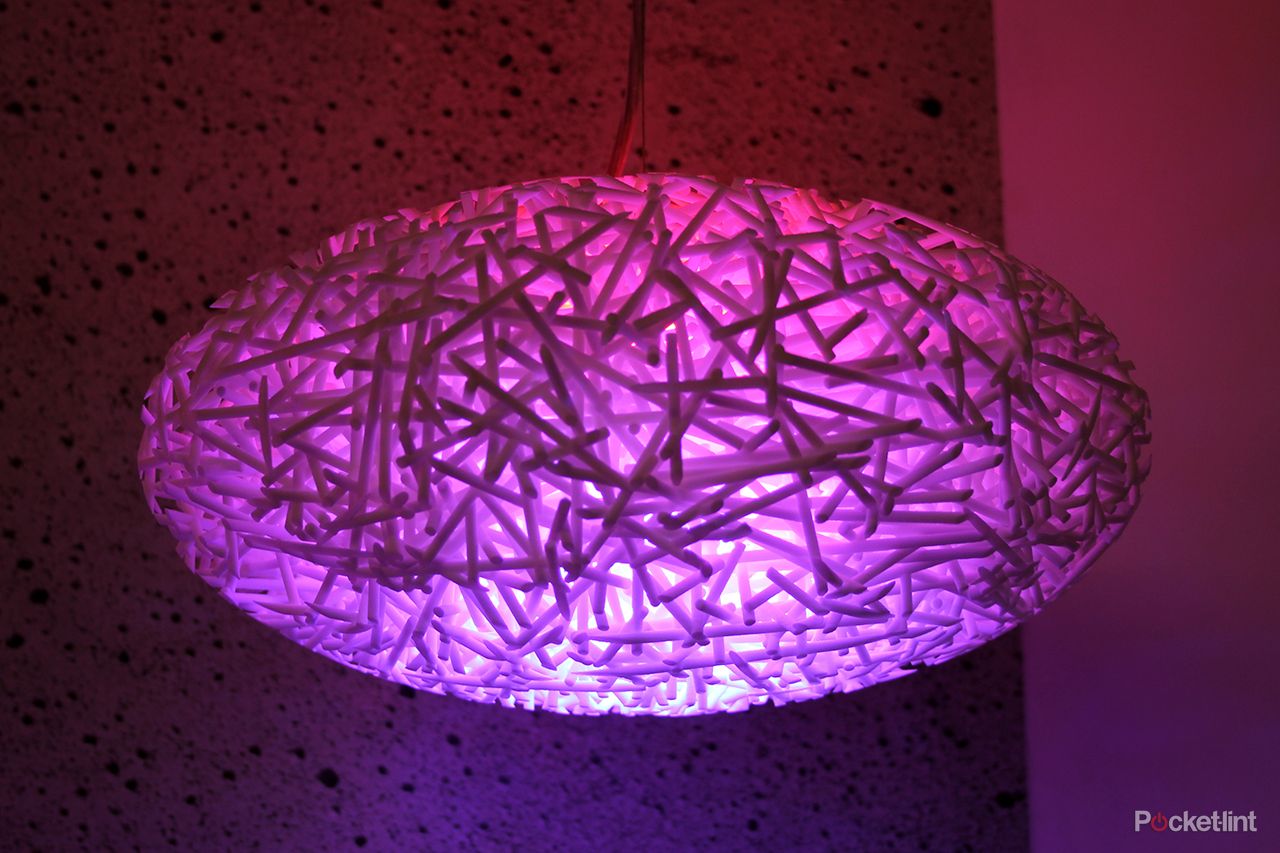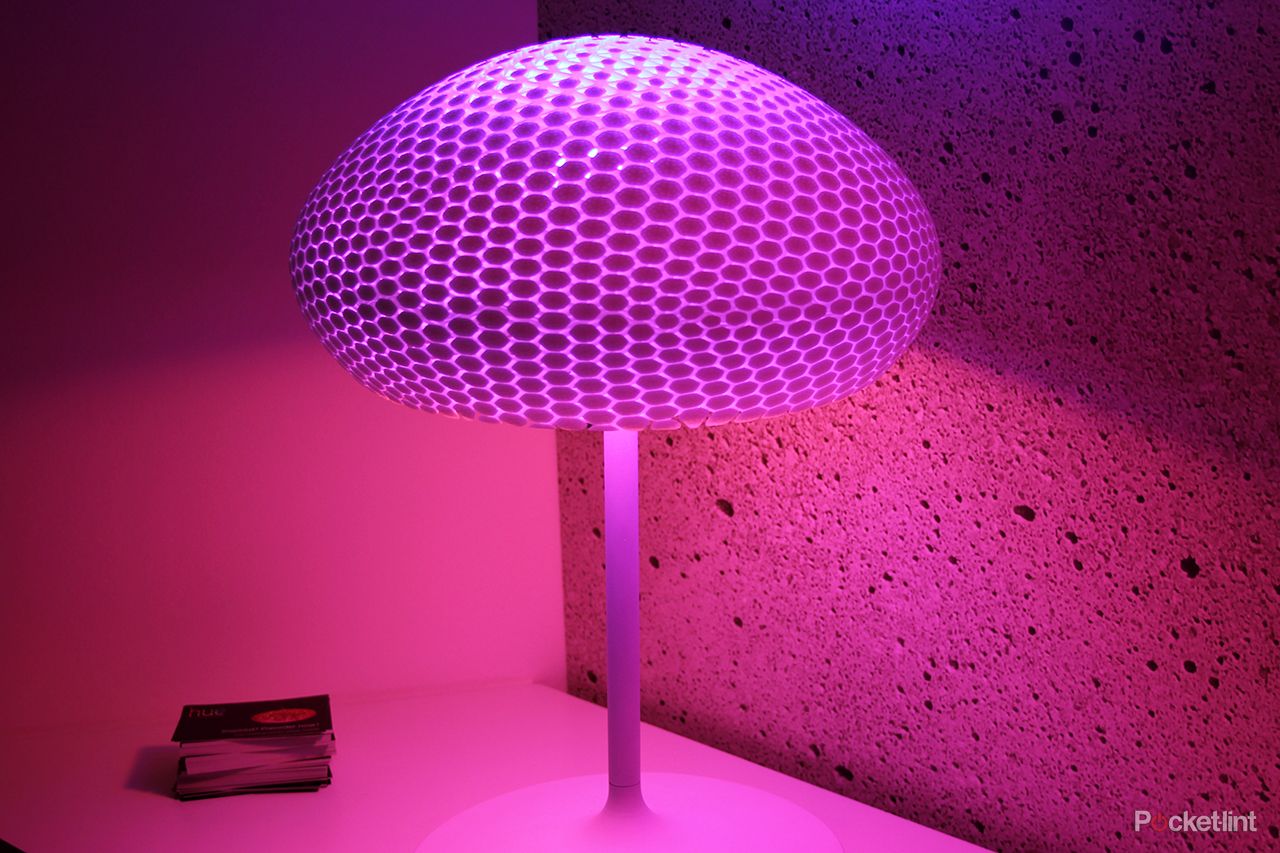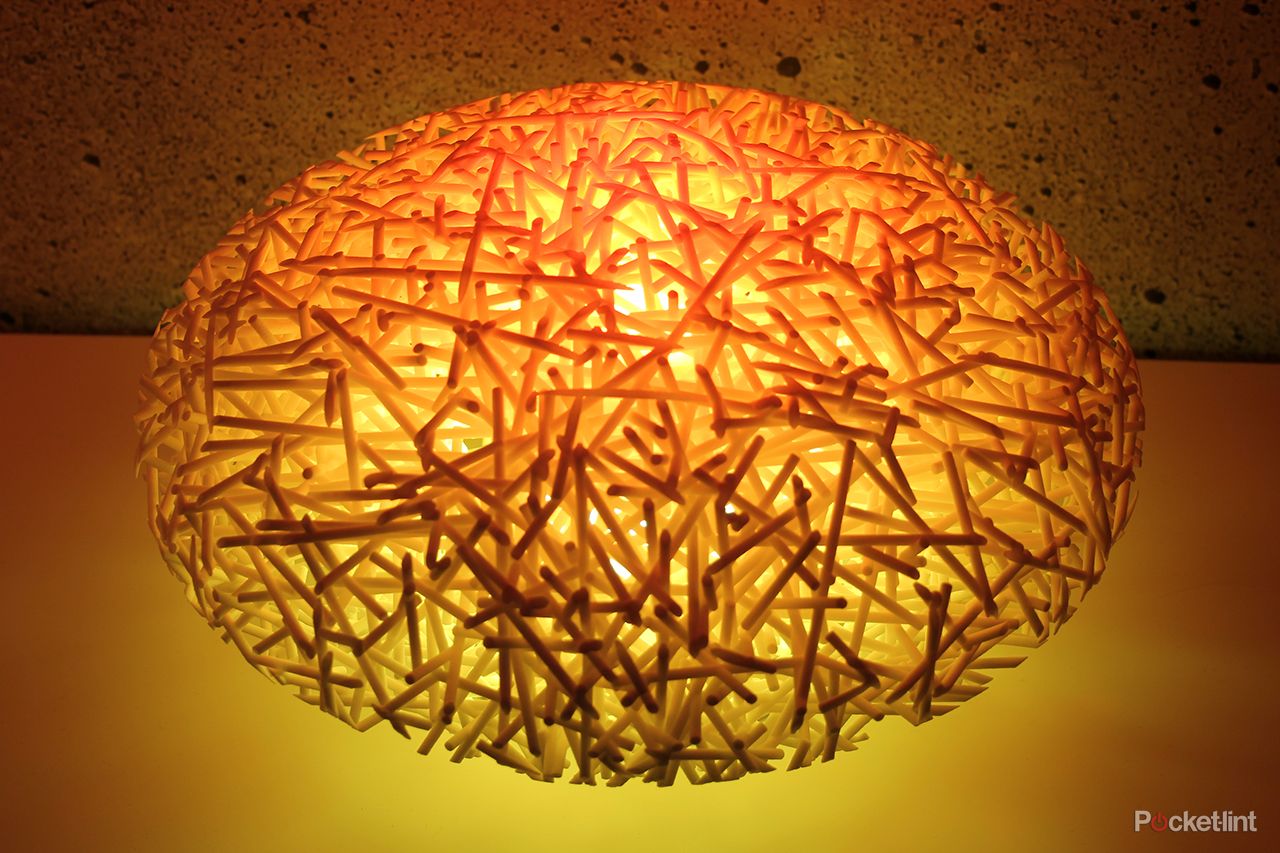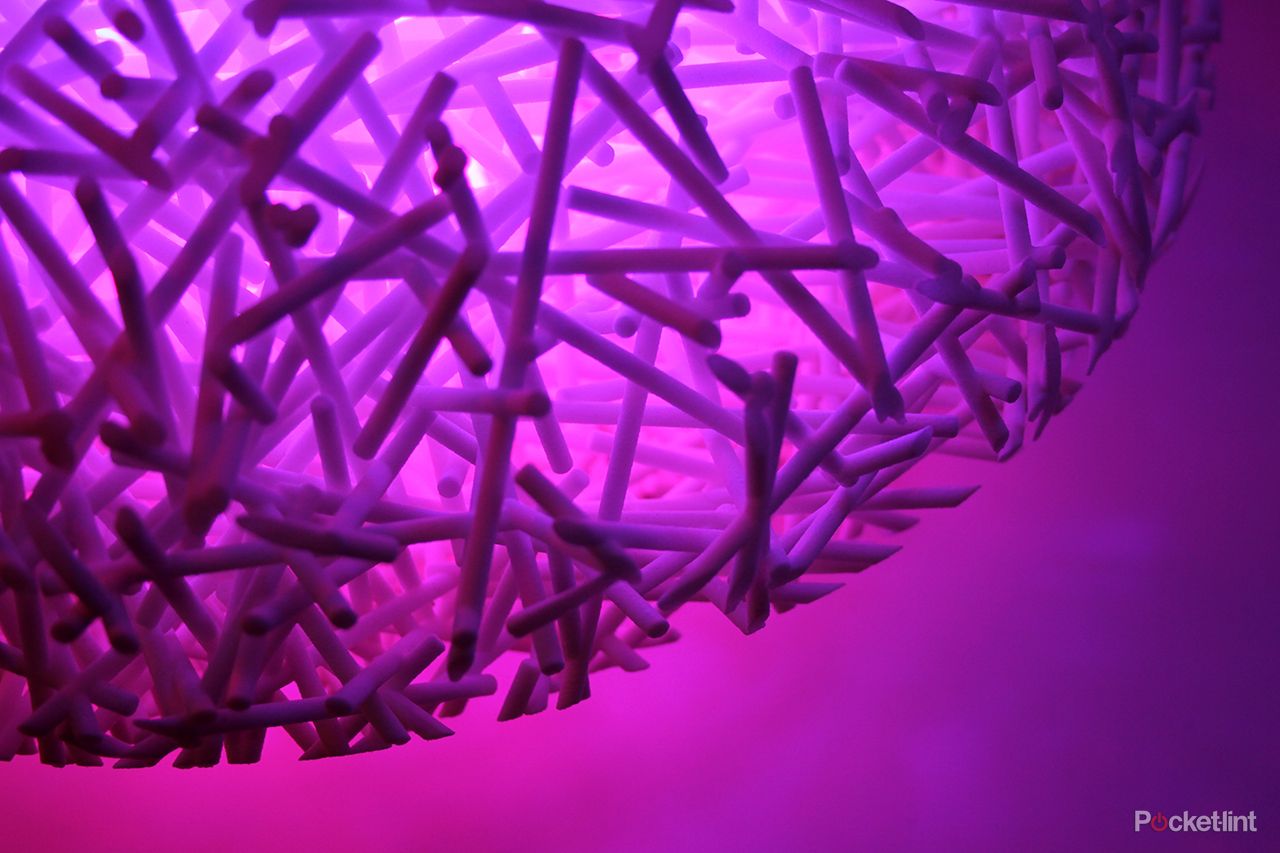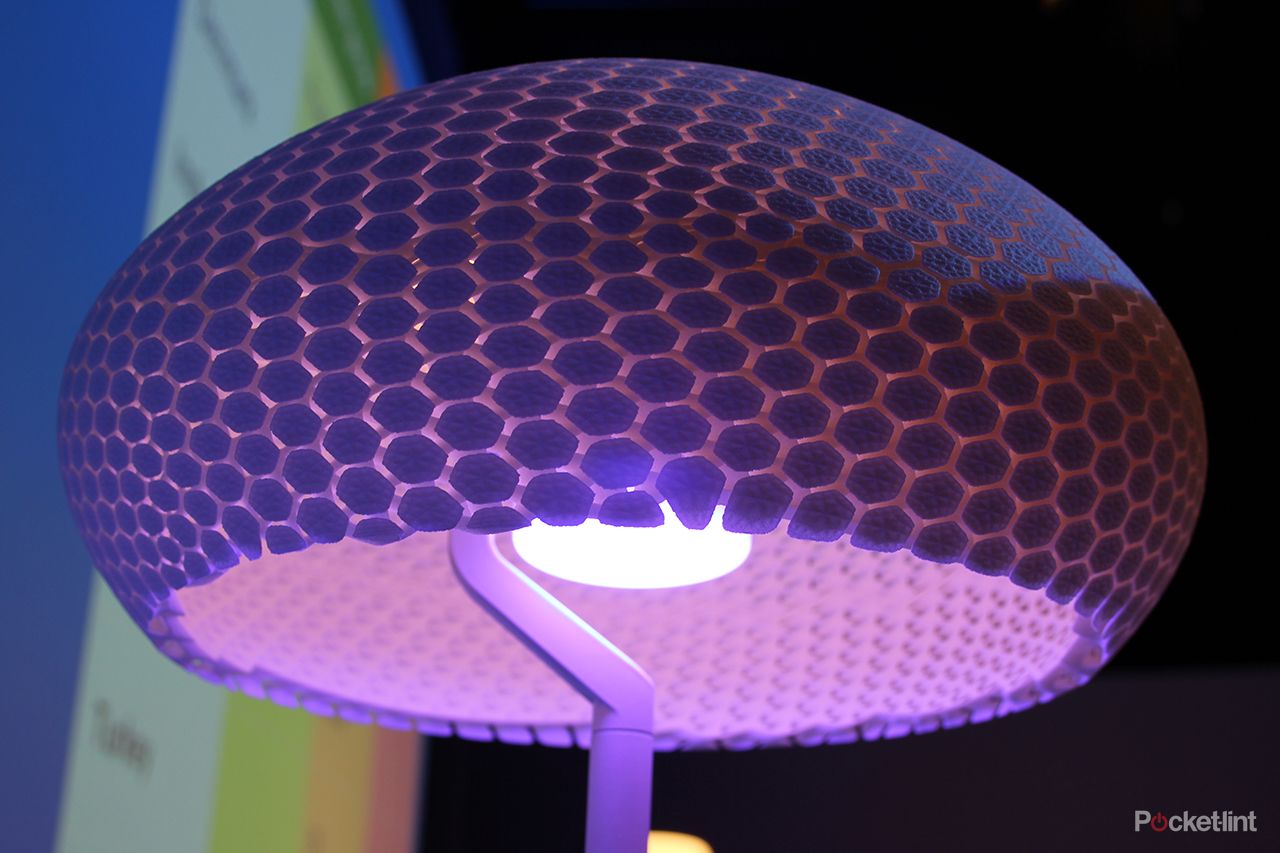There is something quite special about the way technologies can come together and the Philips 3D-printed smart luminaries are exactly that - special.
Not only do they bring an element of art and creativity to a room, but the 3D-printed smart luminaries are a perfect example of what can be achieved when you take the technology of 3D printing, combine it with the technology of lighting and then add smart connectivity.
We set our eyes upon the €2000+ lamps at the Light and Building show in Frankfurt to see if it's worth saving to get one of these made-to-order designs in your house.
The 3D-printed smart luminaries are made from nylon and there are currently two designs available, both of which come in a table lamp and a pendant.
The first is a bee-hive looking structure that features a series of textured pentagon shapes joined together to create the design. It's circular and looks similar to a mushroom but the way it lets the light through is quite spectacular.
How the light is dimmed determines where the light seeps through, but while the sides let through a glimpse, the top and bottom let enough light out to provide plenty of illumination.
The second style offered features a number of small rods thrown together into an oval to create a jumbled collection like Kerplunk that looks great.
Both the designs were hard to the touch which was surprising at first because from a distance, they could almost be mistaken for being soft or spongey.
The shades themselves were around 4mm or so thick, so you aren't looking at an extremely solid structure but certainly one that will stand out.
There were a lot of great Hue products on the Philips stand at the show but these two designs immediately drew your eye towards them, not just because of their interesting look but also because they offer a whole new take on the Philips Hue ecosystem.
They feature the Hue smart bulbs within them meaning you will be able to do everything you can with the original Hue system and they will work in conjunction with the Hue Tap, Bridge and any other Hue bulbs you have.
READ: Philips Hue Tap pictures and hands-on
This means you can control them from the app, just like you can with the other Hue bulbs and they will work with third party offerings too such as the Jawbone bracelet that knows when you are coming into the room, subsequently turning the lights on.
The 3D-printed smart luminaries are by no means cheap with the table lamps costing €2499 and the pendants costing €2999 but there is no denying they are certainly different and bring something a little different to the smart lighting equation.

